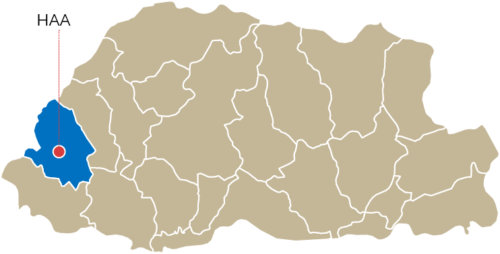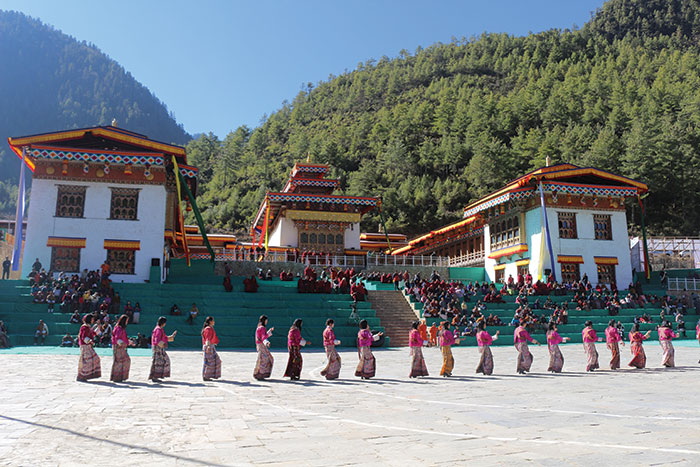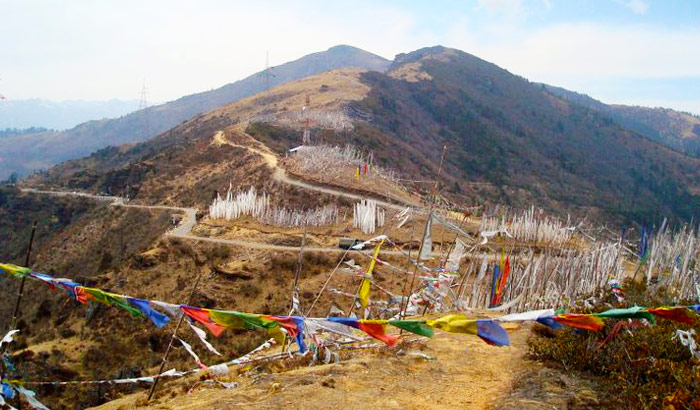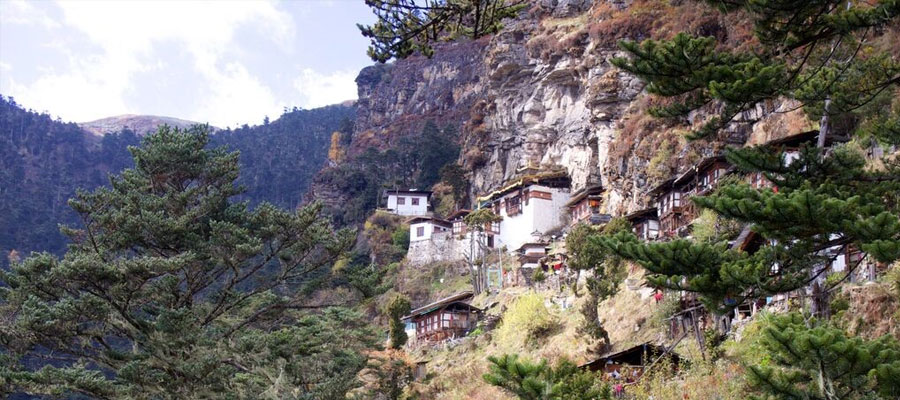HAA

Located in South West of Paro and covering an area of roughly 1706 sq. km, Haa is one of the smallest Dzongkhag in the country. This tiny region is one of the most beautiful and isolated areas in the kingdom, adorned with pristine alpine forests and tranquil mountain peaks.
Haa is the ancestral home of the Queen Grandmother and the illustrious Dorji family. This valley remains one of the least visited areas in the country and retains the air of an unspoiled, primeval forest. The wooded hills of Haa provides an ideal location for hiking and mountain biking. Biking around the valley to visit the dozen or so local temples is an enjoyable way to spend the day when visiting.
Haa is home to a number of nomadic herders and hosts an annual Summer Festival that showcases their unique lifestyle and culture. The festival is an ideal occasion to immerse yourself into the traditions and unchanged lifestyles of nomadic Bhutanese herders, as well as to sample some delectable Haapi cuisine.
Haa’s major feature is the Haa Valley, a steep north-south valley with a narrow floor. The name Haa, connotes esoteric hiddenness. An alternative name for the district is “Hidden-Land Rice Valley.”The main crops grown in the valley are rice, wheat and barley. Other cash crops such as potatoes, apples and chilli’s are also grown by farmers on the valley floor, along terraced hillsides and in some of the more accessible side valleys. The region comprises of the Torsa Strict Nature Reserve, one of the environmentally protected areas of Bhutan. It occupies a substantial proportion of Bji and Sangbay gewogs but there are no inhabitants in the Reserve. Torsa is connected to the Jigme Dorji National Park via a biological corridor, cutting across the northeastern half of Haa District.
THINGS TO DO
Also known as White Temple is one of the oldest temples around. As per the legend King Songtsen Gampo released a black and white pigeon in order to build temples. The white pigeon landed on mountains of Chenrizi of towering Rigsum. On the other hand black pigeon landed on north – that is Lhakhang Nagpo. Today the temple is called Nagpo or black built on the site where black pigeon landed. Both the temples are much revered and must visit. The annual festival HAA TSECHU is celebrated here in these temples on the 8th – 10th day of Bhutanese month.
When you drive to Haa valley, you will cross Chelela pass. Standing at a height of 3988 meters above sea level, its gives the perfect view of Mount Chomolhari and Jichu Drakey. One of the best places for short walk; It’s good to sit here and sip a hot cup of coffee. The passes in Bhutan are decorated thoroughly with screaming colorful prayer flags and Chelala is no different in fact Chelela Pass is considered one of the most picturesque passes of Bhutan. It offers some great opportunities for Photography enthusiasts to just take beautiful pictures after pictures.
The Kila Nunnery was established as a meditation site in the 9th century and is probably the oldest nunnery in the country. The nunnery sits clinging on a cliff hovering over several other temples and retreat huts built for nuns. The total of 50-70 nuns currently reside at the nunnery to pursue higher Buddhist studies and live in complete isolation. The nunnery is located at about 3500m above sea level. An hour hike from the main road between Paro and Haa takes the hikers through rich forest and scenic views including sightings of Mt Jhomolhari and Jichu Drake.
The hikers can also choose to descend downwards from the Chelela Pass as the nunnery, which is situated below the pass. It takes 1 ½ hour to reach the pass from Paro by car and then a downward trek of about half an hour to the nunnery. Once at the nunnery the hikers can catch a breath and observe the nuns while they go about their own daily spiritual routines.
Built in the year 1915, It’s an interesting place. Standing in the midst of lush greenery this beautifully painted building is worth of spending few hours walking and admiring the very presence of it.[







